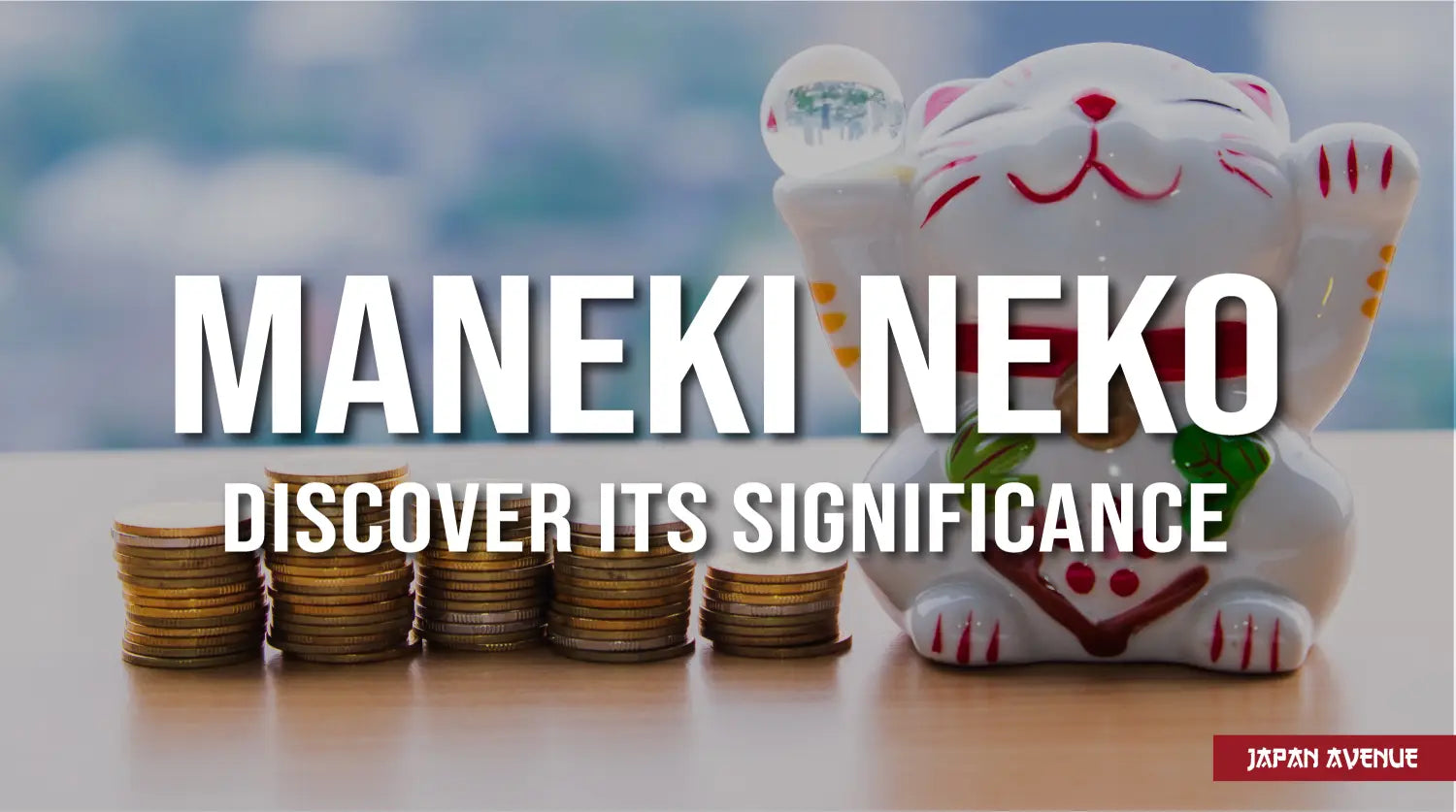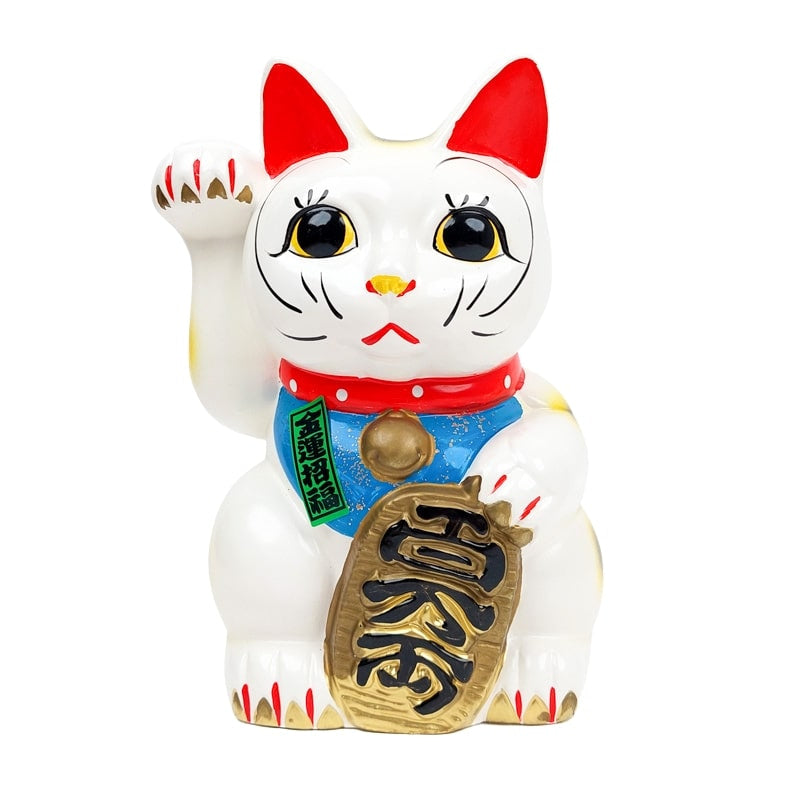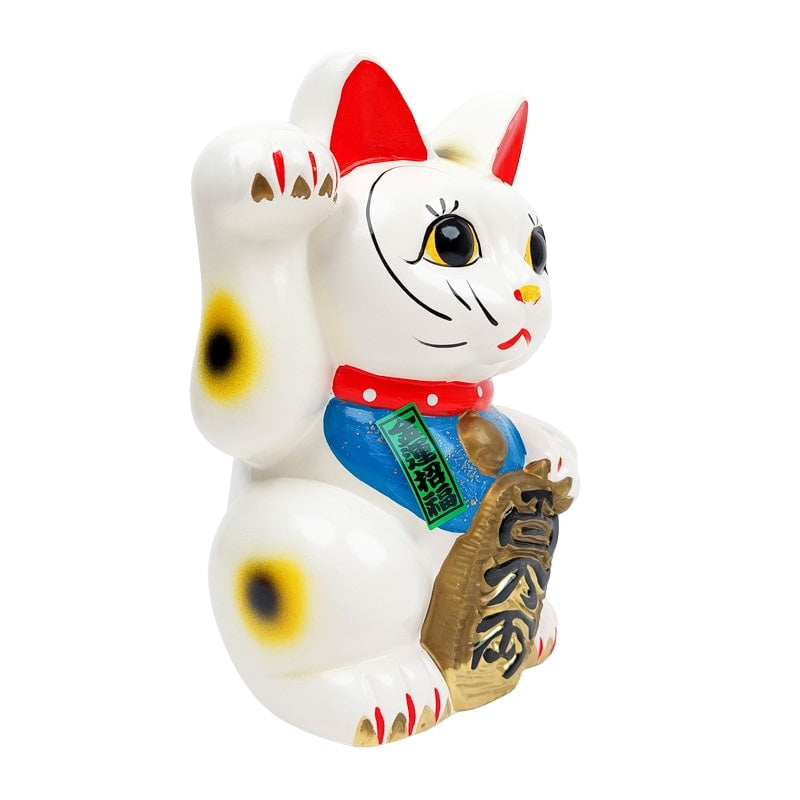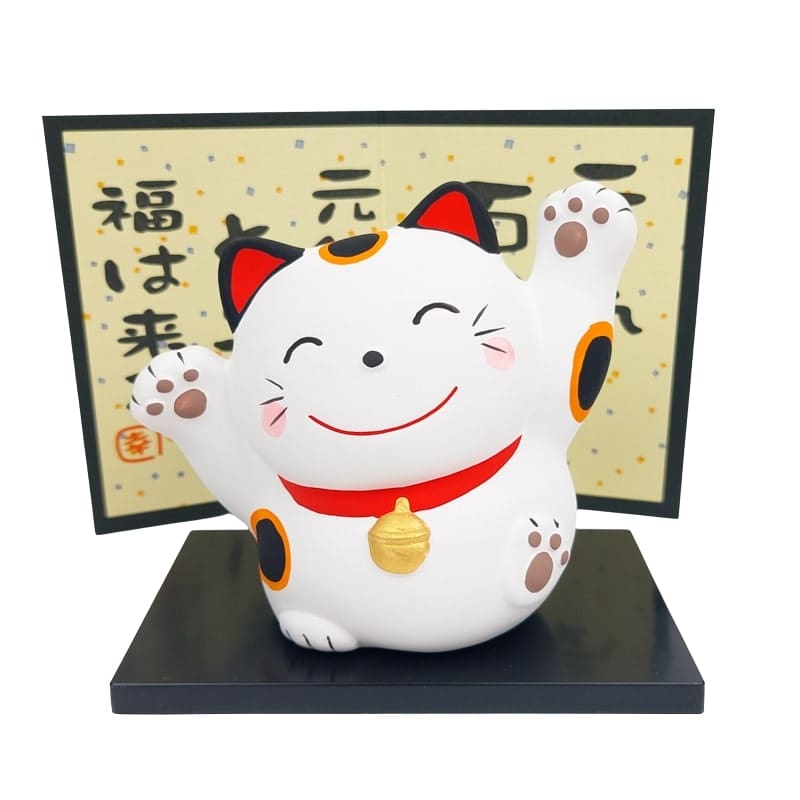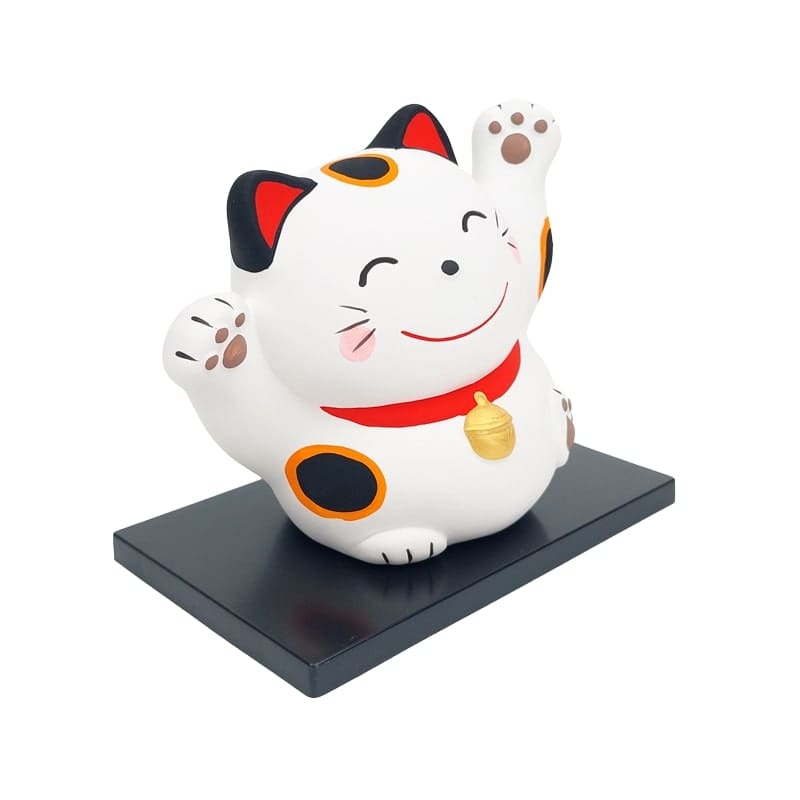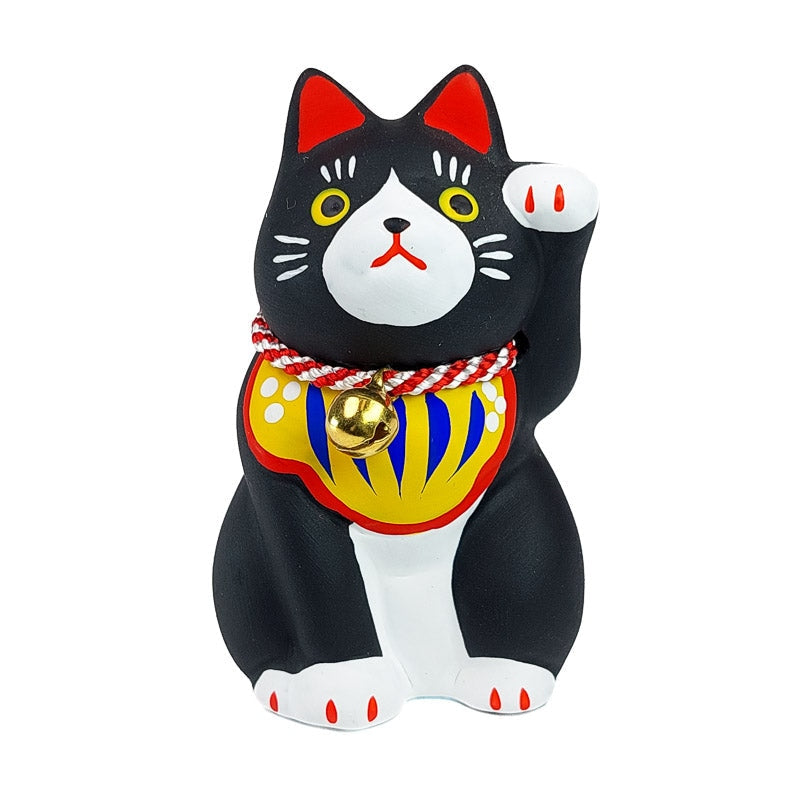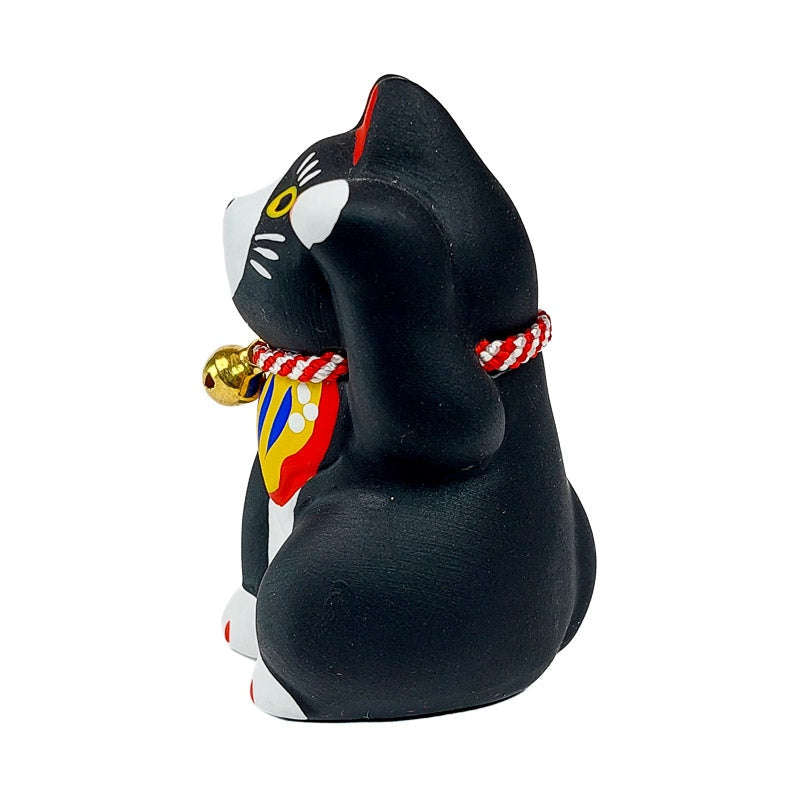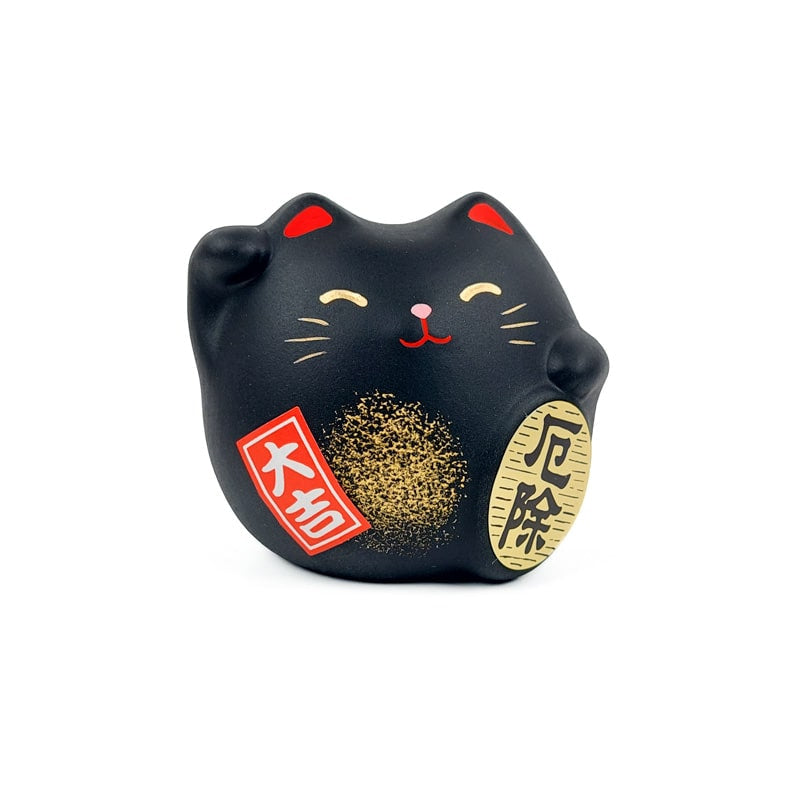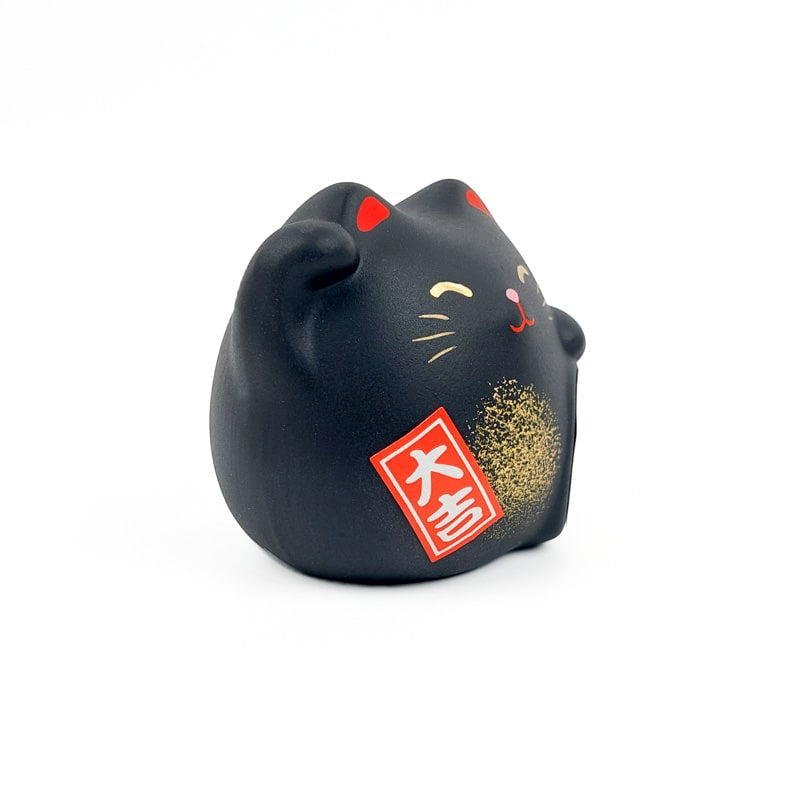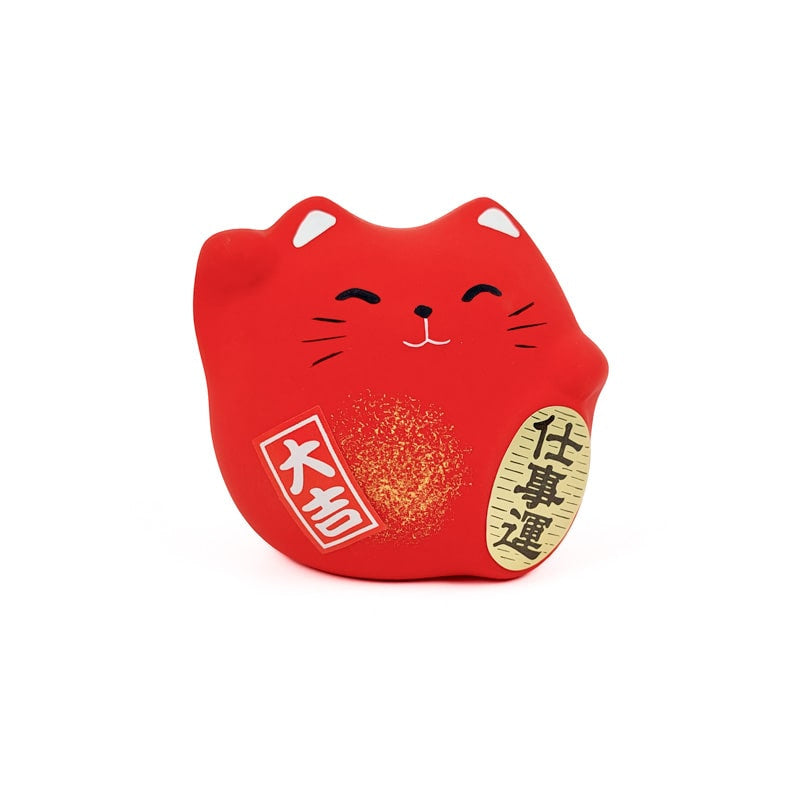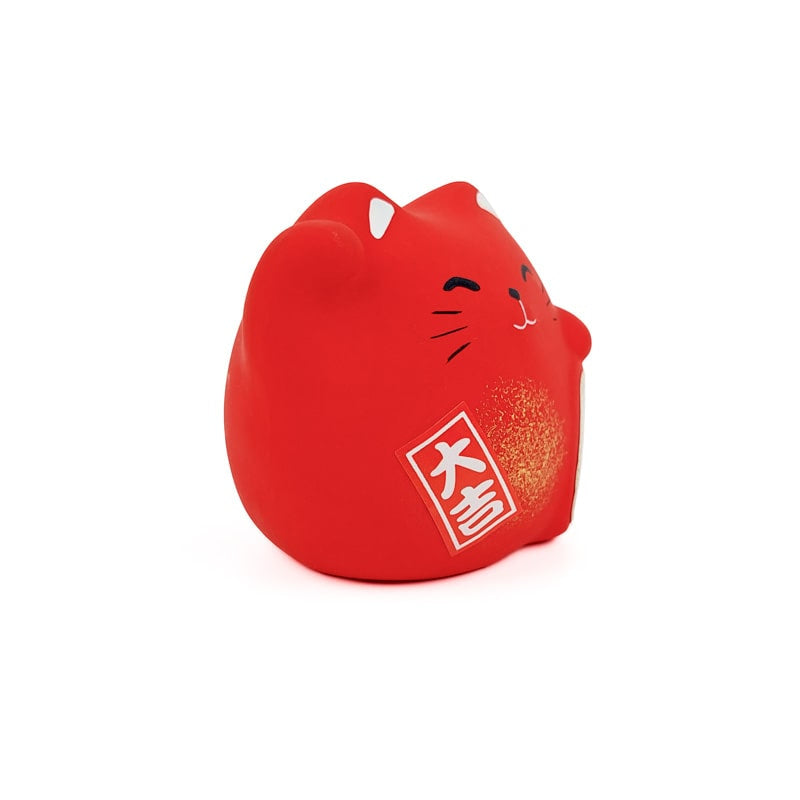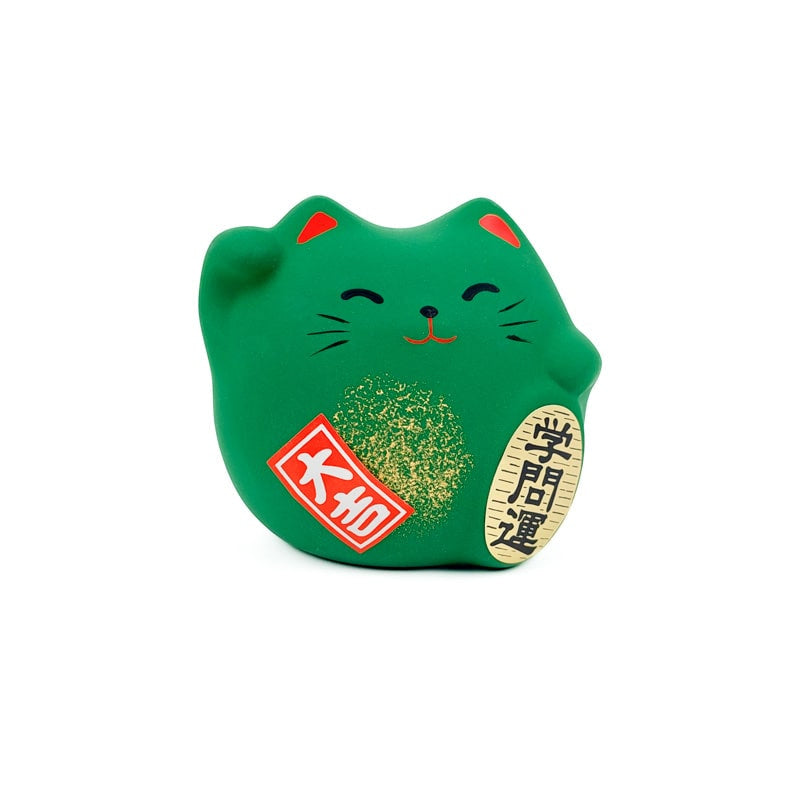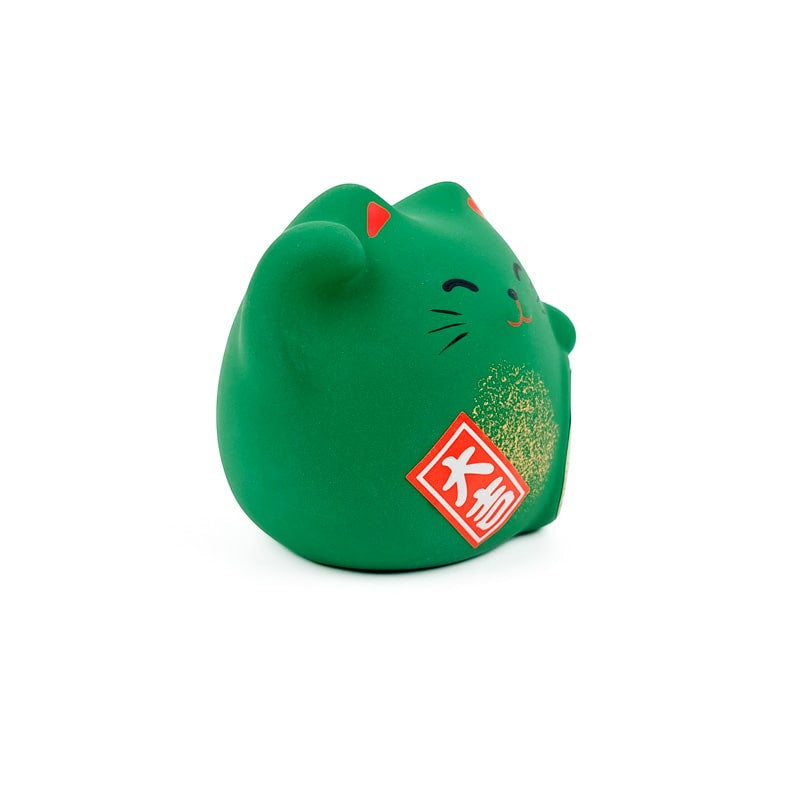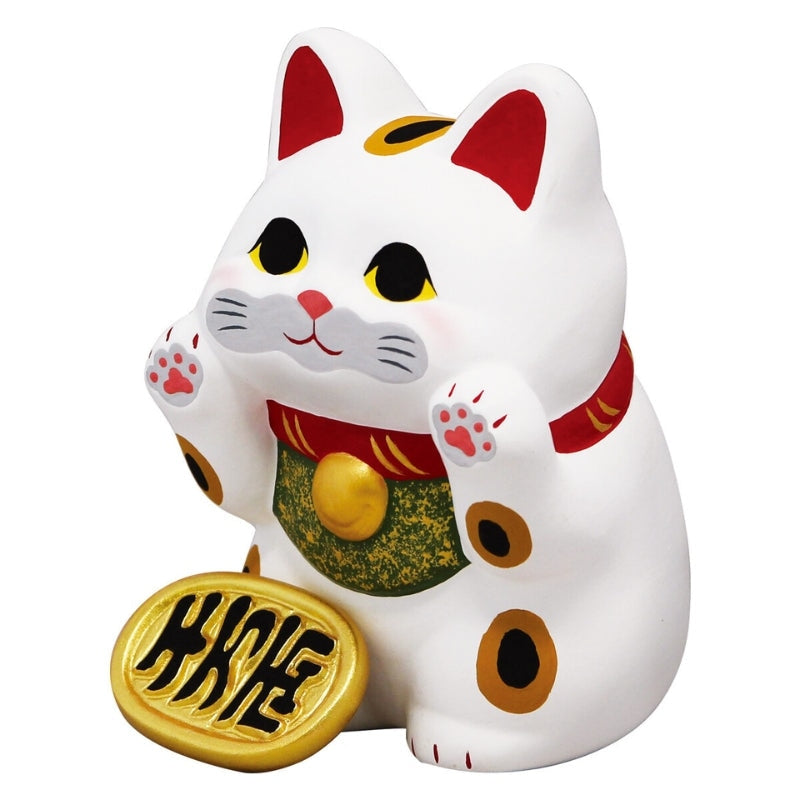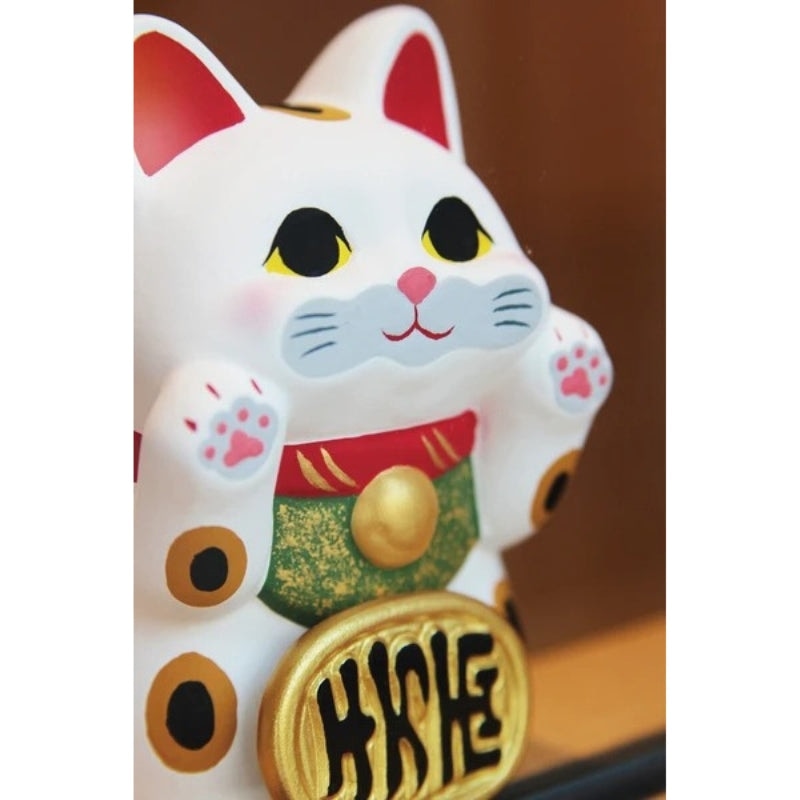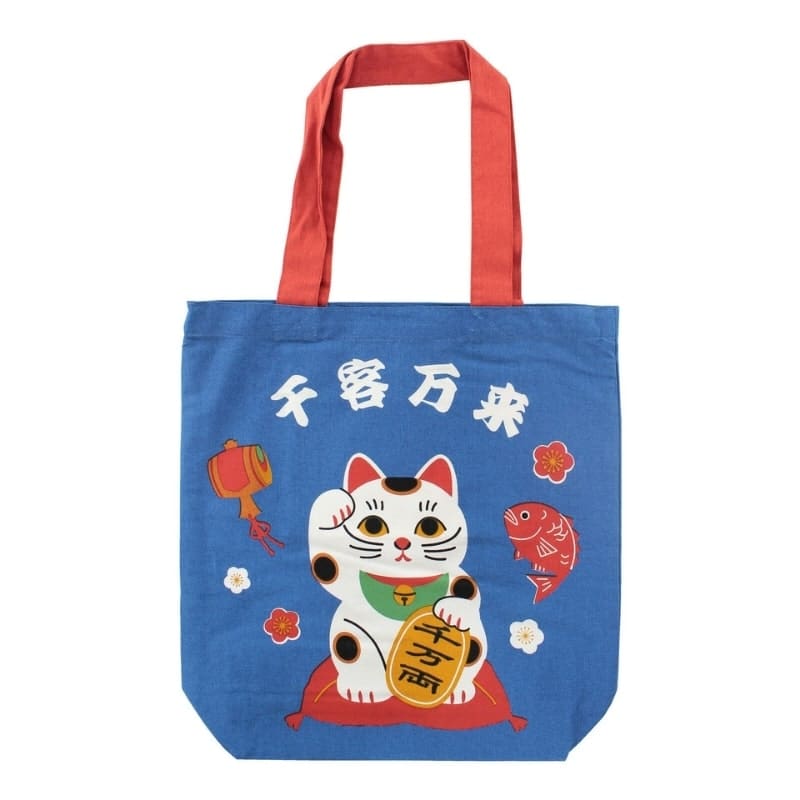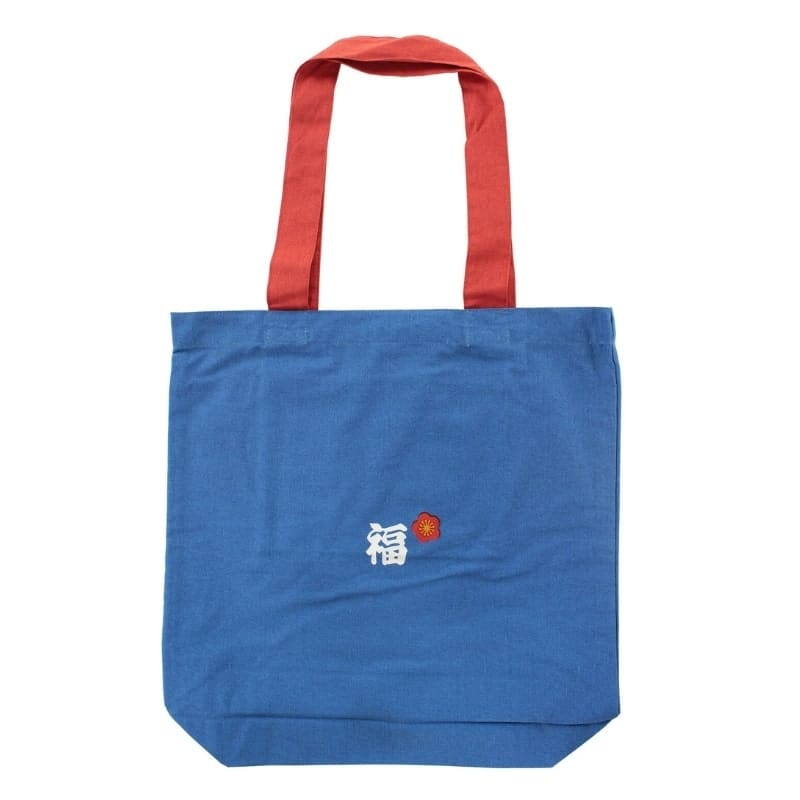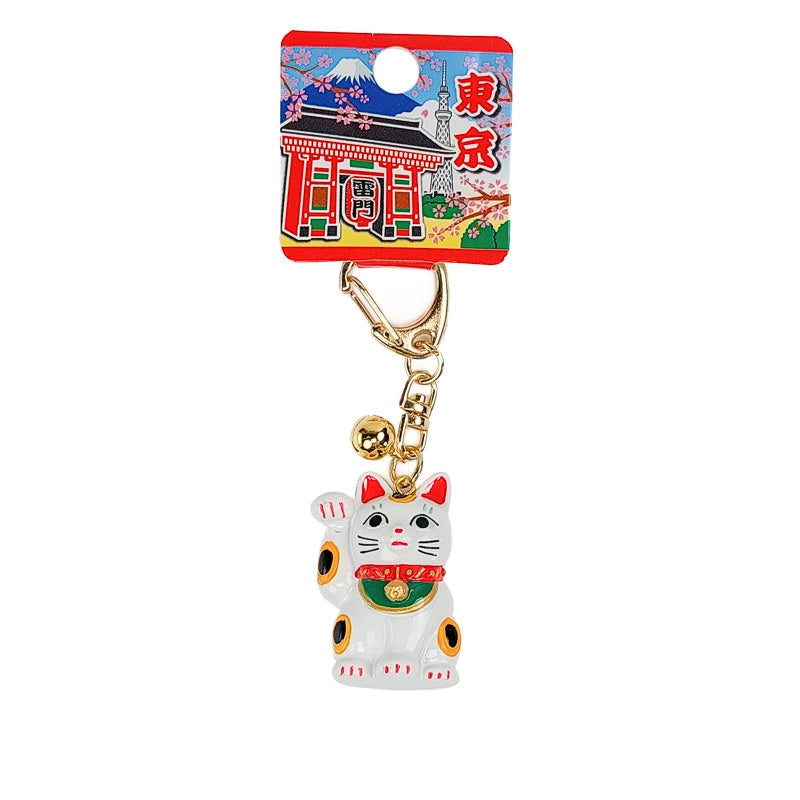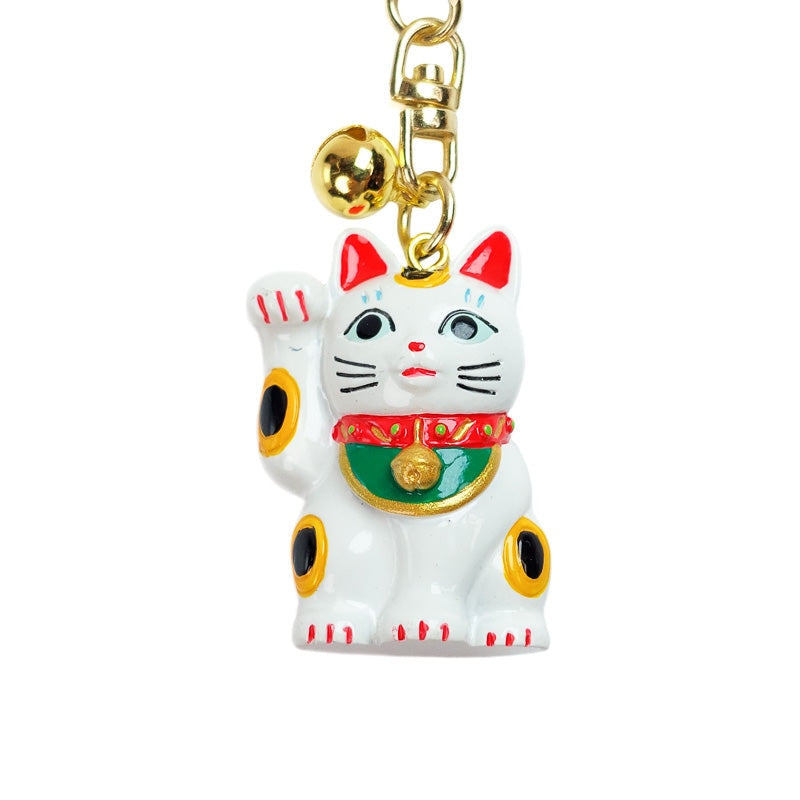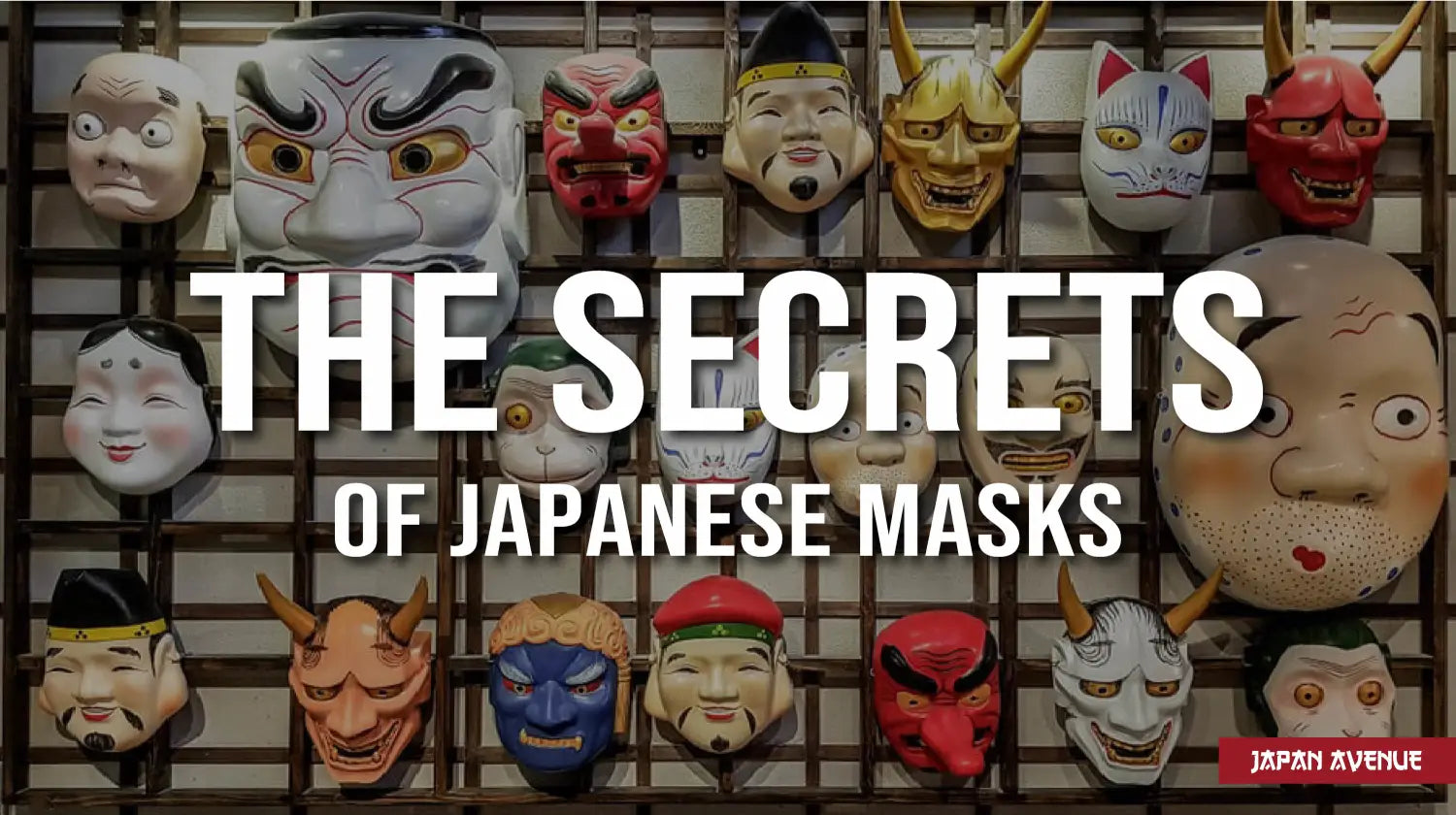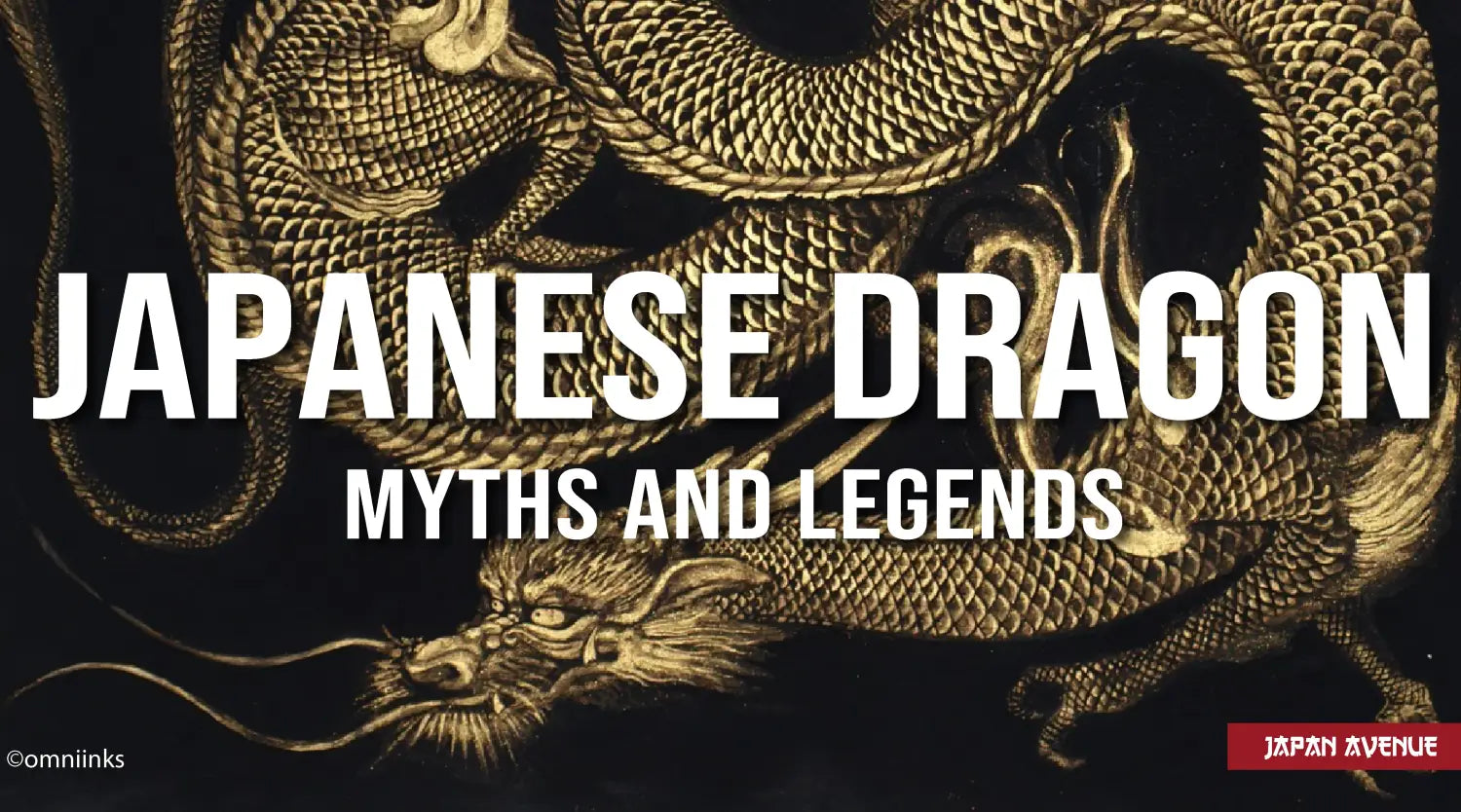Found in souvenir shops all over Japan, at the entrance of shopping malls or in Asian restaurants throughout the world. This Japanese good luck charm, admired by the residents of the archipelago, protects its holders while bringing wealth and prosperity to their homes.
The Maneki Neko is a Japanese figurine representing a sitting cat with one of its front paws raised as a sign of welcome. This small and "welcoming" cat has, according to its color, a different meaning, but it is especially known to bring happiness, luck and good fortune to its owner.
Very much appreciated in Japanese folklore, this figurine, made of ceramics, keeps its place through time and even has a day of celebration on the Japanese calendar. The Maneki Neko occupies an important position in Japanese culture by connecting the traditions of the past to the world of today.
Where does its name originate from? Where to find one? What is its purpose?
Let's focus on the Japanese' favorite cat! 😃
😸 Maneki Neko, who are you?

A small traditional piece of ceramic or porcelain representing a little, smiling cat raising its paw, the Maneki Neko comes from the verb Maneku which means "to invite" in Japanese language and from the Neko which means "cat". Hence, this is why we call it the "Beckoning Cat".
According to the tradition, this lucky charm attracts fortune 💰 to the one who holds it. Which explains why many businesses exhibit this little cat at the entrance of their stores or on the counter.
Besides in stores, this little cat also is very present in homes. It can also be found in shape of a key chain or a piggy bank. As you have understood, the Maneki Neko is not just an ordinary feline! 😉
The higher this cat raises its paw, the more powerful it is! As time goes by, they rise more and more skywards. Thus, one can have some fun guessing his era according the level of its paw. Ingenious, right? 😄
Maneki Neko are generally made of ceramics or porcelain but can also be found in various materials such as plastic or even gold and jade for the chicest among them. Some of them even have solar collectors, providing them with an appealing gesture.
|
❓ Did you know? When the Maneki Neko raises its left paw, it attracts customers, and when its right paw is up, it invites them to spend their money in the store. Such beliefs change according to the regions, times, and businesses involved. Occasionally, it raises its two paws or even the four of them to cumulate its powers. |
🔴 What does the color of the Maneki Neko signify?
In addition to the different attitudes, this lucky charm figurine can be found in various colors.

- White: the most common version of Maneki Neko, a symbol of purity and joy.
- Black: chases away evil spirits, disease and malicious people.
- Red: brings protection and health.
- Pink: calls for love within the couple.
- Yellow or gold: ensures wealth.
- Green: helps to succeed at school.
- Tricolor: this version of Maneki neko remains the most appreciated and effective. A tricolor fur in white with black and red spots is quite exceptional in the Japanese bobtail, the cat that inspired the Maneki Neko.
Whatever its color, there are many virtues hidden in this smiling little cat. However, its most well-known purpose is to fill your wallet. 🤑
🔔 Maneki Neko accessories

You may have noticed that this kitten always carries a scarf or a red collar with a bell around his neck? Such accessories were frequently used in the Edo period, to distinguish cats belonging to wealthy owners. Red was the color of the flower that was used to make the collars of these noble cats. 👑
In addition, the Maneki Neko sometimes wears a bib which reminds us of the Buddhist deity Jizo, protector of the children. One can imagine that the Maneki Neko has a certain bond with Buddha.
And lastly, the koban, or large golden coin originating from the Edo period, is an invitation to good fortune at home as well as success in business. 💹
👋 Meaning of the gestures of this Japanese cat
You might think that this little cat is saying hello or goodbye. 👋 But actually, in Japanese symbolism, the movement of the paw is a sign of invitation and has nothing to do with Western greetings.
The posture of this figurine reminds us that of a cat grooming itself. In Chinese superstition, it is a sign announcing the arrival of a guest or the rain. In either case, it may explain why people enter a store. 🤷
🏠 The place of Maneki Neko according to the tradition
Generally, it has its place in storefronts, next to cash registers or on the counter of a restaurant or a bar.
At home, the Maneki Neko is often found at the entrance or on a shelf, as a decoration, clearly visible to all members of the household. And, in order to bring fortune, it is placed in a room where one is supposed to work, such as in an office.
You can also hang a black Maneki Neko in front of a mirror to accentuate its protective power. However, be careful not to put it in front of a window as the energy would then be sent outside.
🐣 Origin of the Maneki Neko
 Maneki Neko figures at the Gotokuji temple in Tokyo ©Dick Thomas Johnson/Flickr
Maneki Neko figures at the Gotokuji temple in Tokyo ©Dick Thomas Johnson/Flickr
The history of the legendary cat dates back to the Edo period, somewhere between 1600 and 1868. However, we only really found its trace starting from the Meiji government in which it was already considered as a lucky charm, much appreciated by the people of the archipelago.
There are various Japanese legends around this lucky cat. The most well known is that of a poor priest who lived alone with his faithful cat, named Tama, in the Gôtokuji temple.
« On a stormy day, the desperate priest asked his four-legged friend for help.
A few steps away, in order to escape the torrential rains, Lord Naotaka took refuge under a tree in front of the old priest's temple. Violent thunder flashes crossed the sky. Then the lord noticed a cat in the distance that seemed to be waving its paw as an invitation. Intrigued, Naotaka decided to approach the animal, advanced in its direction, and when he looked back, the lightning struck the tree that had served as his shelter a second earlier.
Grateful, the lord made many donations to the temple and his guests no longer lacked for anything. He dedicated the temple to the hero who saved him from lightning and then created a statue of it. Ever since, the cat has been a symbol of good fortune and protection among the Japanese people. »
Another legend tells the story of an old woman, who lived in poverty in Asakusa Imado.
« One day, as she had nothing left, she had to sell her cat in order to buy something to eat. Inconsolable, she dreamt about her companion every night. That' s when, during her dream, her companion suggested to create small figurines with his effigy and to sell them. So she did. The figurines were such a success that the old woman became very rich. Thus the Maneki Neko was born.. »
😺 A famous cat in Japan and abroad

Maneki Neko is such an important part of Japanese culture that an official day has been dedicated to it. September 29th is the Maneki Neko day. We also dedicated it a Buddhist temple, Gotokuji, and a Shinto shrine, Imado-Jinjao where we can find hundreds of figurines in his effigy. If you are planning a trip to Japan, we strongly recommend you to visit them. 👍
|
❓ Did you know that this famous magic cat has served as a muse for many felines? We can mention Hello Kitty, a star among children and Miaouss, a money-hungry Pokémon or the famous samurai cat Hikonyan. The Maneki Neko has inspired a wide range of manga, fictional characters and video games in Japan! |
With its cute little face, this cat has also conquered the hearts of the Chinese before seducing Westerners. In China they call it zhao cai mao, which stands for "the cat that brings fortune". This mysterious cat is evidently found in all Chinatowns throughout the world as it is so much appreciated in Asian culture. In other countries, it is known as the Lucky Cat.
In short, if you wish to adopt this little cat with its many virtues, you can be sure that it will bring you luck, happiness, health and above all wealth and prosperity in your home.
Our online store offers you a beautiful collection of Maneki Neko in order to find the cat that will fulfill all your expectations.
Find out more
Did you like our article about Maneki Neko? Check out the article dedicated to the Daruma doll, another Japanese lucky charm very much appreciated on the archipelago!
This curious rounded figurine hides a story as fascinating as it is disturbing. If you are about to embark on a project that is close to your heart, or if you dream of seeing your dearest wish come true, the Daruma is the Japanese talisman you need!

